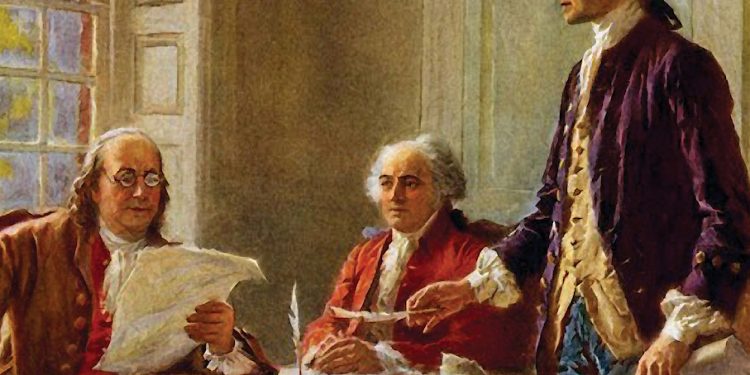You may have learned from our history the reason we celebrate the day that marked the adoption of the Declaration of Independence.
It actually goes all the way back to the momentous occasion right inside the Continental Congress meeting in Philadelphia and the 56 signatures that were affixed to one of the more consequential documents ever written.
It was on July 3, 1776, when Declaration committee member and future President John Adams wrote to his wife Abigail with the instruction of how the day was to be celebrated by succeeding generations.
“It ought to be solemnized with Pomp and Parade, with Shews, Games, Sports, Guns, Bells, Bonfires and Illuminations from one End of this Continent to the other from this Time forward forever more.”
Boston.com research tells us that Adam’s wish took effect beginning the next year, with illuminative celebrations over Boston, and at Philadelphia with ships parading down the Delaware River firing their cannons 13 times in honor of the original Thirteen Colonies and ending the night with the ringing of bells and a grand exhibition of fireworks..
Beyond the central reason for the annual celebrations across the land, there are some other major historical events that also happened on July Fourth, and this seems a good time to give account to some of them.
In 1802, West Point officially opened, and a year later, also on July 4, the Louisiana Purchase Treaty was announced to the American people.
During the 50th anniversary of the signing of the Declaration, unable to travel to the occasion in Washington, D. C., due to their poor health, both Thomas Jefferson and John Adams died on July 4, 1826.
Five years later on July 4, our fifth president, James Monroe died.
Closer to home, on July 4, 1845, the Texas Congress passed an ordinance agreeing to become the nation’s 28th state.
On July 4, 1863, two of the more consequential battles of the Civil War, separated by more than a thousand miles, ended and resulted in the reelection of Abraham Lincoln and the ultimate victory that kept our country together.
In Gettysburg, the three-day battle there that claimed the lives of 7,058 men and left another 33,264 wounded, concluded with what most historians consider the turning point of the war from which the Confederate forces never fully recovered.
On the same day, the 47-day siege of Vicksburg ended the 18-month campaign there with the surrender of the Confederate Army to General Grant that propelled him into the national spotlight and determined the fate of the war.
There are more occasions that share the holiday, but if we take another look at that letter from John Adams to his wife, we find that the basis for the celebration was actually based on his deep faith that the actions of our founders were ordained by God:
“It ought to be commemorated, as the Day of Deliverance by solemn Acts of Devotion to God Almighty.”
Upon the adoption of our Constitution, Adams would again declare the new nation’s foundation: “Our Constitution was made only for a moral and religious people. It is wholly inadequate to the government of any other.”
In the midst of the annual celebration of our freedom, we are reminded that our country was founded by imperfect men who looked for divine guidance and yet fell short of achieving perfection.
That reality is confirmed in all of human history as scripture teaches us, from the very beginning, that this was the case from our creation and that only one perfect man ever lived on the earth.
So, we remain a work in progress and count on the promise of Second Chronicles that, “If my people, which are called by my name, shall humble themselves, and pray, and seek my face, and turn from their wicked ways; then will I hear from heaven, and will forgive their sin, and will heal their land.”
May God bless America!
















